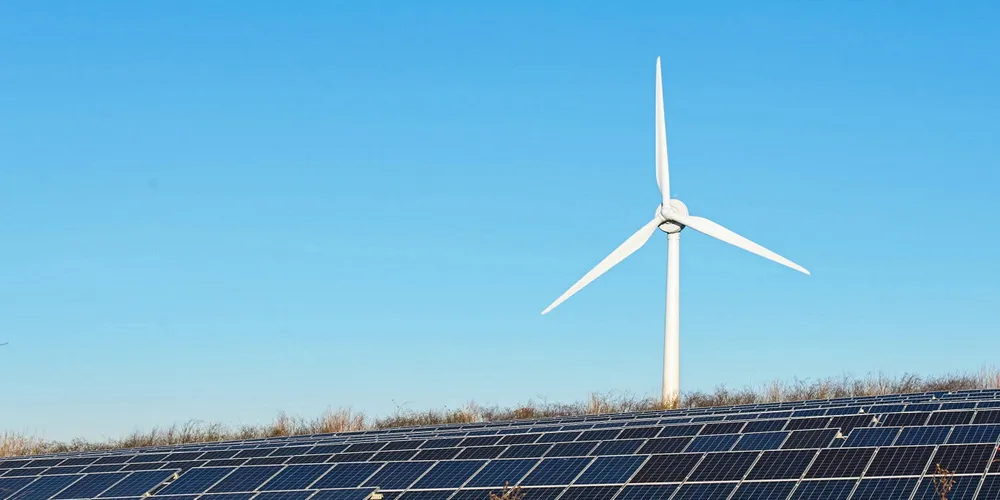Top US developers plan 94GW of solar and wind power build through 2026: S&P
Third-quarter pipeline roughly 60% solar as onshore wind activity slows due to federal tax policy uncertainty and interconnection issues

Top utility-scale solar and wind developers in the US plan to build 94.1GW of capacity through 2026 with most of it announced or in early development, according to a third quarter report from S&P Global Market Intelligence.
The number is up 2% from the second quarter and includes 54.45GW of solar and 39.7GW of onshore and offshore wind.
Industry pacesetter NextEra Energy had the most solar in development (15.07GW), followed by EDF (8.2GW), and Invenergy (8.07GW), while Apex Clean Energy was the top wind developer (8.64GW).
The analytics firm said 28% of solar and wind capacity is announced projects which must have a listing in an interconnection queue with an accompanying public announcement or permitting action.
Roughly 51% of total capacity is in early development at the start of permitting, while 12% is in advanced development, when financing is in place, power off-take signed, equipment secured, necessary permits are approved, or a contractor has signed on to the project.
Lastly, 9% is under construction when building activity has begun; however, site preparation such as grading of roads does not qualify.
The data reflects the trend this decade in the US where utility solar development is outpacing wind even with announcement and early development of large projects off the Atlantic coast.
While cumulative US onshore wind installations were 140GW on 30 September versus 68GW for solar, the segment’s growth has sputtered. S&P’s data shows that 2022 installations through three quarters totaled 4.5GW versus 9.2GW a year earlier.
Less build-out partly reflects uncertainty over federal tax credits, which led some developers to cancel projects or extend their timelines. The landmark climate law signed by President Joe Biden in August renewed the credits for 10 years while creating new ones for supply chain manufacturing.
While there is recognition among most policymakers and stakeholders that upgrading and expanding the grid is a national priority amid climate-change, federal and state planning and permitting regimes devised last century have proven resistant to significant change. Interconnection is a major hurdle for many projects.
Onshore wind also suffers because it is sometimes less available during peak hours than solar in the top state power markets led by Texas and California. That makes solar energy more valuable for both the project owner and consumer, one reason why 80% of PPA announcements through 30 September were solar.
As well, solar is driving hybrid clean capacity development across the US as the industry looks to capture power for high demand periods, a trend that will accentuate as technology improves battery storage duration.
The biggest weakness of solar is that the sector is overly reliant on imported components and panels, a situation that will persist well into next decade. Onshore wind is better placed as GE Renewable Energy, Siemens Gamesa, and Vestas have blade and nacelle factories in the US, although some components come from a global supply chain.
(Copyright)